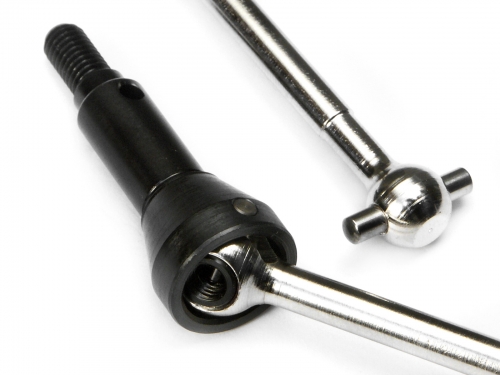Wow, impressive paint skills, you were able to get perspective and shading. I don't think I've attempted anything so ambitious with paint.
Did you see this
template? I know the 10-24 thread is really big (comparatively), but it seems like the easiest way to make a spade bolt is to start with a piece of threaded rod with the correct diameter, then grind the top portion down to the correct width and drill a hole through it. It would take some extra work, but you could make one with a smaller thread. As for hole location, I think as long as the center of the lumbrical piston holes are .375" from the center of the metacarpal holes (to keep the pistons parallel to the mets) you should be able to change their location a little.
Honestly, I haven't put too much thought into the palm yet. Those drawings should be a fairly accurate representation of the resin cast, but to make a real machine it still needs some tweaking, especially the angles of the mets. The pistons also rotate through a different plane than the fingers; I'm not sure how big of an issue that is, but my CAD program doesn't like it.
If it helps, I have in my notes that the distance from the bottom of the humerus to the surface that articulates with the shoulder is 27 cm (10 5/8"). I've also heard of people who download the half scale T-800 pepakura model and scale it up for reference.
I think I understand your idea, the dust plug holds the pin in place, and the offset cap screw holds the dust plug in place?
I thought construction of my lumbrical piston idea was pretty simple. The body could be made the same way as the one in
this thread (start with 3/16 OD" tube, glue short pieces of 1/4" OD tube over the ends). For the internals, attach spring to Du Bro fitting, attach piston shaft to spring, slide the assembly, shaft first, up through the bottom of the piston body. Tighten lower set screw to hold Du Bro fitting in place. Upper set screw can be used to fix the finger at a set angle for display. I like your design, it would prevent the spring from ever being over extended, and the piston shaft can't be pulled out of the housing. It seems like it would be tricky to manufacture the parts, the wall thickness of the cap would only be around 1/32".
Update to List of Drawings:
I just added metric versions for most of the hardware. I haven't been able to find any set screws that are shorter than 3mm. I also haven't seen any metric round threaded standoffs.






